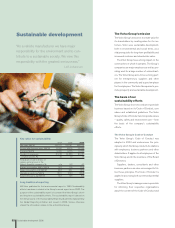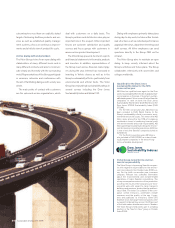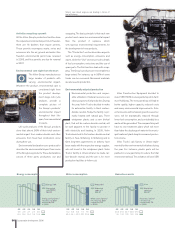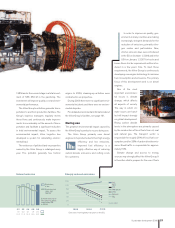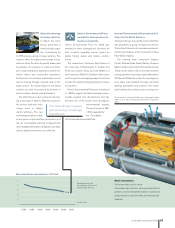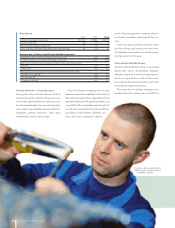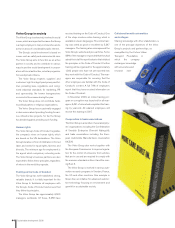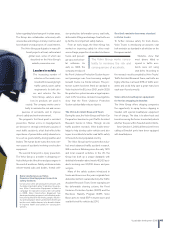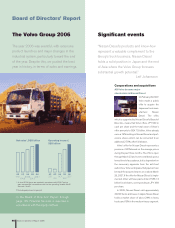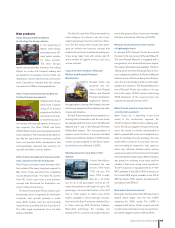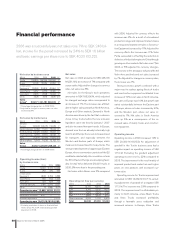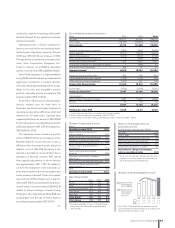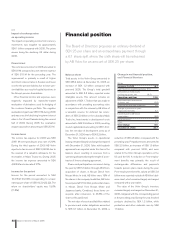Volvo 2006 Annual Report Download - page 46
Download and view the complete annual report
Please find page 46 of the 2006 Volvo annual report below. You can navigate through the pages in the report by either clicking on the pages listed below, or by using the keyword search tool below to find specific information within the annual report.
Key figures
2004 2005 2006
Number of employees at year-end 81,078 81,856 83,187
Share of women, % 16 17 17
Share of women, Board members, % 15 10 11
Share of women, Presidents and other senior executives, % 16 16 15
Absence due to illness in the Group’s Swedish companies
Total absence due to illness of regular working hours, % 5.2 4.7
of which continuous sick leave for 60 days or more, % 51.4 49.6
Absence due to illness (as percentage of regular working hours) by gender
Men, % 4.9 4.4
Women, % 6.7 5.7
Absence due to illness (as percentage of regular working hours) by age
29 years or younger, % 4.8 4.1
30–49 years, % 4.9 4.7
50 years or older, % 6.2 5.1
Greater diversity – a strategic goal
Among other items, the Volvo Group’s Code of
Conduct prescribes that the Group must sup-
port human rights and that no employee must
be discriminated against on grounds of gender,
race, religion, age, disability, sexual inclinations,
nationality, political conviction, trade union
membership, social or ethnic origin.
One of the Group’s strategic goals is to raise
awareness about and capitalize on the diversity
that exists throughout the organization. For an
international group with global operations, it is
essential that the organization actively reflects
its customers and understands the conditions
prevailing in local markets, different cul-
tures and future employees’ require-
ments. Diversity generates creativity, which in
turn leads to innovation, a prerequisite for suc-
cess.
There are various diversity networks within
the Volvo Group, and several units have diver-
sity managers responsible for promoting ongo-
ing improvement in this area.
Volvo Group Attitude Survey
The Volvo Group Attitude Survey is an annual
Group-wide survey documenting employee
attitudes toward their work and what improve-
ments are required. The results of the survey
are compiled and discussed within each team
to identify key improvement areas.
The proportion of satisfied employees has
steadily improved in recent years. In 2006, the
Fredrik Lindvall, assembling the
RM12 engine at Volvo Aero in
Trollhättan, Sweden.
42Sustainable development 2006


